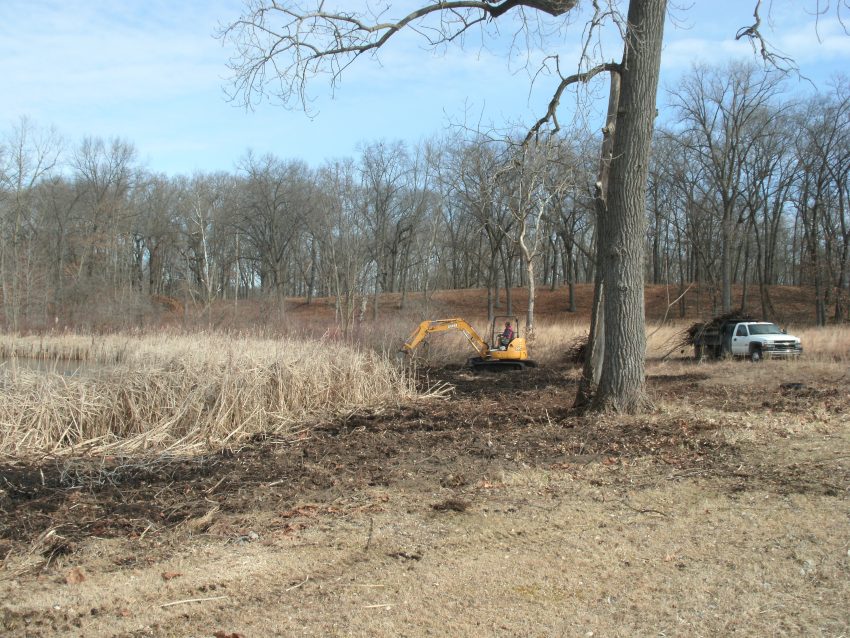High Lake Sedge Meadow Restoration
Sedge meadows include forbs such as fen betony, white turtlehead and great blue lobelia.
Air photos from 1938 and 1967 show that the northeast shoreline of High Lake consisted of an open area of herbaceous vegetation. This likely formed as the lake level dropped and additional shoreline emerged due to late 1880’s drainage activity. While this site was never in agriculture due to its chronically wet soil, over the years, woody brush and invasive non-native cattails have increasingly dominated the site and shaded the native herbaceous cover. This likely consisted of species common to a “sedge meadow” wetland community.
During the winter of 2017 a contractor used custom-built excavating equipment to precisely uproot each woody plant without undue disturbance to the shoreline soil. During the summer of 2017, herbicide was applied to cattails infesting the wetter parts of the shoreline, and to scattered patches of Reed canary grass. Plant surveys during the 2017 growing season indicated the presence of many sedge meadow/wetland species including: fen betony, white turtlehead, great blue lobelia, cardinal flower, chair maker’s rush and tussock sedge. This site will be periodically burned, along with the adjacent upland Luckey Savanna and Woodland sites.
During the cattail treatment, a floating mat of vegetation was discovered extending to the west along High Lake’s shoreline. It has remnant patches of native wetland forbs and sedges, but is infested with non-native cattail and common reed (Phragmites). Further work will involve controlling these invasive species with hopes that the native wetland plant community can recover.



